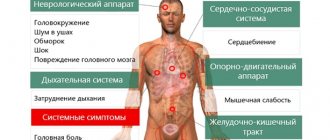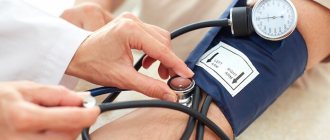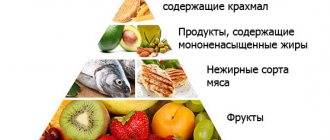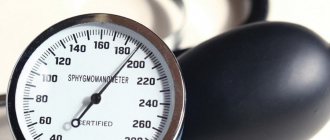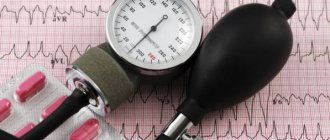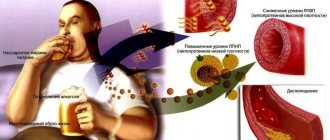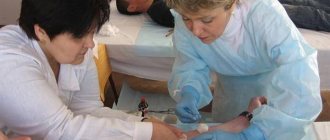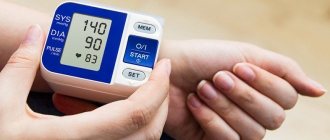Pressure 110/60 mm Hg. Art. in an adult, this is a sign of slight hypotension and often such indicators on a tonometer are the individual norm and do not require correction. But in some cases, it may indicate disturbances in the functioning of the cardiovascular system, kidney problems, nervous exhaustion or anemia.
Low blood pressure 110 over 70 what does this mean?
The optimal upper pressure is 120, and the lower is 70, pulse 65. The normal range of systolic pressure is considered to be from 110 to 130. It is normal for diastolic pressure to range from 65 to 80. During the day and over the years, a person’s blood pressure can change.
The following circumstances influence a person’s blood pressure:
- Strength of heart contraction;
- How much blood is pushed out with each contraction;
- How do the walls of blood vessels respond to blood pressure?
- How much blood passes through the vessels;
- Pressure on the chest bone when breathing.
Upper pressure is an indicator of the condition and functioning of the heart. It shows the strength of the heart muscle and depends on the speed of its contraction. Lower pressure shows the condition of a person's blood vessels. The heart at the moment of its determination is relaxed.
If the lower pressure reading does not exceed 65, then we are talking about hypotension.
For certain people, normal blood pressure may differ slightly from the norm due to the physiological characteristics of the body
Sometimes this condition is very dangerous and requires immediate medical attention. A doctor's help will be needed if, in addition to lowering lower pressure, there is pain in the heart area and shortness of breath. This could be a myocardial infarction. Midges flashed in my eyes, my head began to spin, and my speech was impaired. These are signs of a stroke. If you have a severe headache and nausea, then we are talking about arrhythmia. A drop in pressure always indicates blood loss. If the causes of low blood pressure are eliminated, it will return to normal levels.
How to overcome hypotension
If high (normal) systolic blood pressure in combination with low diastolic blood pressure is caused by any disease, treatment will be aimed at eliminating the underlying disease. If low diastolic pressure does not pose a threat to the patient’s health, but only causes unpleasant symptoms, the therapy will be corrective.
To increase tone and strengthen blood vessels and the heart, a person is recommended to engage in daily physical activity, including in the fresh air. Ideal options include swimming, fitness, cycling and walking. To bring the pressure to 120/80 mmHg. Art., it is recommended to avoid overwork: observe a work-rest schedule, sleep at least 8 hours a day.
Physiotherapy will help raise vascular tone to normal levels: acupuncture, massage, magnetic therapy and cryotherapy. These procedures improve blood circulation, and therefore normalize well-being.
The diet for hypotension should be enriched with:
- nuts;
- bread made from rye flour;
- spices;
- celery;
- dark chocolate.
You are allowed to drink no more than 2 cups of coffee per day. 2 glasses of dry red wine a week not only improves vascular tone, but also strengthens the heart and immune system. However, if vascular tone is high, these drinks should be avoided.
To improve well-being, the patient may be prescribed medications that can raise blood pressure. Treatment of hypotension with medications containing caffeine (Vasobral, Migrenium, Caffetin) is considered effective. Adaptogens are also used in treatment: lemongrass, eleutherococcus and ginseng. The doctor may also recommend mild sedatives: Persen, Novopassit - and tablets with valerian extract. Treatment with medications is prescribed exclusively by a doctor.
Raise low diastolic pressure to 120/80 mm Hg. Art. Traditional medicine will help. There are recipes for easy-to-make medicines:
- Mulberry infusion will help raise blood pressure. To prepare it, take dry mulberries, pour a glass of boiling water and leave. The broth is expressed through 3 layers of gauze. The product should be taken 1/3 cup three times a day.
- This remedy will help not only raise blood pressure, but also strengthen the immune system: take 10 lemon fruits and grate them. The mass is poured with a liter of water and the liquid is infused in the refrigerator for three days. After this time, add 500 grams of honey, mix and infuse again in the refrigerator. You need to take 50 milliliters three times a day.
- A medicine made from 50 grams of ground coffee beans, 500 grams of honey and the juice of 1 lemon will help raise blood pressure. All components are mixed and taken 5 grams 2 hours after meals.
- A couple of onions, including the peel, are washed, then poured with a liter of water and 100 grams of sugar are added. The preparation is boiled for 15 minutes over low heat. Take half a glass, and a portion should be drunk throughout the day. The medicine helps not only raise blood pressure, but also strengthen the immune system.
People who have problems with vascular tone should monitor their blood pressure daily. To do this, it is recommended to purchase a tonometer and use it according to the instructions. If you feel worse, you should consult your doctor.
asosudy.ru
Folk remedies with a tonic effect
To increase blood pressure, you can also use folk remedies, some of which are available in every home. All of them have a tonic effect and can help with severe hypotension.
Folk remedies for increasing blood pressure:
- Coffee with sugar. Caffeine raises blood pressure quickly, but does not last very long. When combined with sugar, this drink will be more effective. It is worth noting that large amounts of coffee have a negative effect on heart health.
- Hot black or green tea. These drinks contain an analogue of caffeine, which increases blood pressure more slowly, but lasts longer. It is very important that such drinks are strong and hot enough. Iced green tea has the opposite effect.
- Aromatherapy can also help. For this you can use essential oils of cypress, nutmeg, ginger or rose.
- Dark chocolate or hot cocoa will also help normalize blood pressure readings. To enhance the effect, you can add a pinch of pepper to the cocoa.
Sweet and salty foods contribute to increased blood pressure. Therefore, hypotensive patients are often recommended to include such foods in their diet.
You can also use simple tips to normalize blood pressure. In most cases, with mild hypotension, such measures help. How to increase blood pressure:
- You need to take a horizontal position. In this case, the head should lie on a flat surface and the legs should be elevated. This will help normalize blood circulation.
- Open indoor windows and loosen tight clothing. You can also take a few deep breaths in and out.
- Drink a couple of glasses of clean water. You can add a little salt to the liquid.
If a woman is expecting a child
During pregnancy, a woman's blood pressure tends to increase, especially in the second half of the term.
At the same time, doctors pay attention: a pressure of 110/70 during pregnancy should not cause concern, because the physiological norm is from 110 to 70 to 140 to 90. But if the numbers on the tonometer are out of this range, then you should consult a doctor
Both hypotension and hypertension may develop.
It has been noted that in the initial stages a decrease in pressure may be observed. This is due to changes in hormonal levels in a woman’s body. By the way, monitoring blood pressure during pregnancy is one of the important factors for assessing her own health and the well-being of the unborn baby.
If you often have high or low blood pressure, then you need to purchase a tonometer. Blood pressure is the pressure of blood on the vascular walls. The pressure when blood is released into the circulatory system (upper) is systolic. During the pause period, between emissions (lower) – diastolic. The difference between these pressures is the pulse pressure.
What does pressure 110 to 60 mmHg mean? Art.
If we consider the pressure readings of 110 over 60, what this means individually, it turns out that the systolic reading is within the normal range, and the diastolic reading is reduced to a borderline minimum value. What does this small imbalance indicate, why could it arise? It is worth saying that for many adults such indicators are working, and for some age categories they are the absolute norm.
In a teenager
Normal blood pressure in adolescents from about 12 years of age begins to approach those of adults - and is 120/110 at 70/65 mm Hg. That is, for teenagers the optimal pressure can be considered 110 over 60. Although 60 mm Hg. Art. for the diastolic indicator it is not enough, but in adolescence this happens quite often, and there are explanations for this:
- the beginning of hormonal changes in the body;
- sedentary lifestyle;
- increased mental stress;
- low level of hemoglobin in the blood.
Pulse
Pulse readings at low values on the tonometer are extremely important, as they allow you to determine the general condition of the patient.
The ideal value for a pressure of 110 over 60 is a heart rate within 80 beats per minute.
A pulse between 50 and 70 beats indicates actual hypotension, and if there is at least one of the additional symptoms, you should not hesitate to get examined by a doctor.
What to do and how to deal with the problem
Pregnant
It is urgent to see a doctor if a pregnant woman, in addition to a constant value of 110/60 mm Hg. Art. symptoms such as:
- dizziness;
- severe general weakness;
- inability to concentrate;
- sudden loss of appetite;
- severe headaches;
- numbness and tingling in the arms and legs.
Under no circumstances should you try to raise your blood pressure with large amounts of caffeinated drinks! This can provoke a hypertensive surge, which is very dangerous for the baby. It is better to drink one cup of hot, not very strong sweet tea.
The above symptoms indicate problems with the cardiovascular system. But even if the expectant mother does not experience any inconvenience, and her blood pressure is constantly low, she needs to undergo a series of tests:
- hormonal levels - perhaps progesterone levels are higher than normal;
- complete blood test - any type of anemia is accompanied by a decrease in blood pressure;
- urine test - to exclude diseases of the urinary system.
Blood pressure may decrease due to constant stress, work overload, and weather sensitivity. In this case, an acceptable solution would be to change your lifestyle and diet, so you need to:
- provide the expectant mother with a restful eight-hour sleep;
- relax more, walk in the park, read books;
- go to the pool or swim in the sea;
- take vitamins, add more seasonal fruits to your diet.
Citramon for raising blood pressure during pregnancy is prohibited, since aspirin, which is part of it, is contraindicated for the expectant mother during the entire period of bearing the baby.
If the drop in pressure is caused by iron deficiency anemia, you need to add beef liver, pomegranate juice, herbs to the menu and be sure to take iron-containing medications.
We must not forget that with constantly low levels, the fetal nutritional system is disrupted, the baby experiences oxygen starvation and its development may be impaired. Therefore, lowering blood pressure requires mandatory consultation with a doctor and treatment.
Adults and elderly people
You should start to worry if the readings of 110/60 on the tonometer are accompanied in an adult by such unpleasant symptoms as severe headache, nausea, sudden attacks of weakness, and dizziness. If you discover such a condition, consult a doctor and get examined to identify the causes of the disease.
First of all, you need to change your lifestyle:
- Quit smoking, because with hypotension, the tissues and brain are already constantly starved of oxygen, and under the influence of nicotine, vasoconstriction worsens the situation even more and can lead to early strokes.
- Reduce alcohol consumption.
- Start doing physical exercise, ideally in the fresh air.
- Take vitamins.
- Increase the amount of greens, vegetables, vegetable oil in the diet;
- Reduce consumption of fried and fatty foods.
For elderly people over 60 years old, if the tonometer readings drop once, it is recommended to drink a cup of black tea with sugar or honey, take a walk, eat an orange, or just lie down with a pillow under your feet to increase blood flow to the head. If these actions do not help and the value of 110/60 appears on the tonometer regularly, you should definitely visit a therapist and cardiologist.
It also makes sense to slightly increase physical activity: walk in the fresh air every day, do a little exercise. Be sure to consult your doctor, he will recommend loads that are comfortable for this disease.
Children and teenagers
To normalize blood pressure, a teenager should rest more, go for walks, engage in active sports, and take vitamins that have a beneficial effect on vascular tone. This will help bring your blood pressure to normal levels for your age.
Useful video
In the video below you will learn how to raise blood pressure at home:
A reading of 110/60 on a tonometer may be normal for an adult with an asthenic build or an athlete, but they are also normal for teenagers. During pregnancy, hypotension requires careful medical supervision; in adulthood and old age - lifestyle modification and regular medical examinations. For older people, low blood pressure is an extremely dangerous symptom that requires immediate consultation with a doctor and drug treatment.
In what pathologies is blood pressure at 110/60?
We can talk about pathology only if the indicated indicator is not “working”. In such a situation, they speak of mild hypotension (differences in terminology: hypotension is a disease, hypotension is a condition).
Cerebrovascular accidents (not acute)
We are talking primarily about pathological processes such as osteochondrosis of the cervical spine and vertebrobasilar insufficiency.
The first disease provokes ischemia of special regulatory centers of the brain, which are responsible for controlling vascular tone.
Vertebrobasilar insufficiency is determined by the same thing, but to a lesser extent, since it mainly affects the occipital lobe of the brain and the cerebellum.
Stroke in the early rehabilitation phase
A stroke is an acute disorder of cerebral circulation. The death of neurons is possible due to blockage of blood vessels or their stenosis (ischemic stroke), and additional bleeding into the membranes of cerebral structures is likely (hemorrhagic type of stroke).
Both types are deadly to health and life. In the early recovery period, disruption of adequate regulation of arterial tone is possible. Hence the low blood pressure numbers of 110/60-65.
If the indicators begin to rapidly “creep” up, the patient should be re-hospitalized for examination and to prevent the development of another stroke.
Heart attack in the early rehabilitation phase
The recovery period of acute malnutrition of the heart muscle is associated with a change in the nature of the functioning of the organ.
This is quite normal at first, but the patient needs to be closely monitored.
Congestive heart failure
The same disorder of myocardial nutrition, but not acute, but chronic. Occurs mainly in older patients, as well as in persons suffering from concomitant pathologies of the cardiovascular system.
Hypocorticism or secondary Addison's disease
Accompanied by a pronounced or moderate decrease in blood pressure. A pressure reading of 110 over 60 is possible, which means that the patient’s adrenal glands are disrupted, producing an insufficient amount of the hormone cortisol.
Anemia
Iron deficiency, as a rule. Accompanied by a change in circulating blood volume and a decrease in pressure to 108-112 to 60-64.
Permanent blood loss
For example, for stomach ulcers and other types of gastrointestinal pathologies. As a result of exposure to this factor, a change in the amount of circulating blood and secondary anemia occurs, which is often accompanied by a decrease in blood pressure.
Kidney diseases
Pyelonephritis, nephritis, glomerulonephritis. Nephrology patients should be closely monitored. Hypotension can quickly give way to malignant hypertension.
Vein diseases
First of all, atherosclerosis of large arteries and aorta. This is a pathological process that is characterized by occlusion (blockage) or narrowing (stenosis) of the great vessels.
The result is a disruption of blood flow. This can result in both hypotension and increased blood pressure.
Liver pathologies in the phase of decompensation or partial compensation
For example, hepatitis, cirrhosis. A decrease in blood pressure is a consequence of toxic damage to the body, since the liver can no longer perform cleansing functions effectively.
Hypothyroidism
Lack of production of thyroid hormones and pituitary hormones that regulate their synthesis.
What do heart rate indicators tell you?
All of these pathological conditions can occur both against the background of a normal heart rhythm (pulse 60-80), and against the background of bradycardia (heartbeat 50-59 beats. min.) tachycardia (over 80 beats. min.). This is an uninformative indicator that does not say anything. You need to deal with the symptoms.
It is impossible to understand the situation on your own. You need to contact your treating specialist.
Different people
The body's response to a decrease in blood pressure to 110 over 60 will vary from person to person. Therefore, it is necessary to decide whether pressure with such values is normal only after the person’s age is known and the characteristics of his body have been studied.
This blood pressure is acceptable for people who have not yet turned 30 years old. It is especially often diagnosed in those with asthenic conditions and athletes.
In teenagers
Boys and girls in adolescence experience various conditions that they have never had to deal with before. These include low blood pressure, which stops at 110 to 60. A decrease in blood pressure in adolescents is usually caused by hormonal changes and a number of changes in the functioning of internal organs.
If a girl or guy does not complain about feeling unwell, then there is no reason to worry.
During pregnancy
Blood pressure 110 over 60 during pregnancy can hardly be called pathological. Although usually during the period of bearing a child, during changes in pressure, the tonometer shows inflated numbers. However, every woman's body reacts to pregnancy differently.
Pregnant women who are worried about signs of malaise should be wary of a decrease in systolic and diastolic pressure. They may indicate the presence of a disorder in the functioning of the cardiovascular and other systems. In this case, a doctor's consultation is required. The sooner measures are taken, the greater the chance of preventing the development of hypotension in the expectant mother.
In older people
In people over 60 years of age, blood pressure usually rises regularly. At this age, this change is natural. But a decrease in blood pressure most often indicates the development of hypotension, which has not yet had time to manifest itself sufficiently. Unreasonable pressure surges become a good reason for a visit to a cardiologist. After all, only a doctor will be able to notice the beginning of the pathological process and offer treatment that will stop its development.
Causes
In pregnant women
The cause of hypotension in pregnant women in the first trimester is most often dehydration caused by toxicosis. At later stages, blood pressure may drop due to low hemoglobin, problems with the cardiovascular system or kidneys, stress, overwork, and low mobility.
In adults and older people
In an adult, there can be many causes of hypotension - from vascular pathologies to endocrine disorders.
Often, the appearance of this problem is stimulated by constant stress, nervous fatigue, bad habits, chronic inflammatory processes, osteochondrosis, and the initial form of diabetes.
Low blood pressure in older people may be due to the same reasons as in younger people, but most often it signals atherosclerotic hypotension - the vessels are affected by atherosclerosis, lose tone, and because of this, hypotension occurs.
In children and adolescents
What can cause abnormal blood pressure readings in a child or adolescent?
- the presence of a chronic inflammatory process in the body;
- excessive stress, causing both physical and emotional exhaustion;
- injuries that caused severe blood loss;
- pathological disorder of cerebral circulation;
- problems with the cardiovascular system.
Symptoms of low blood pressure
There are several options for the development of clinical pictures, but more often a greater number of attacks occur in the evening, at the end of a busy working day. The patient complains of dizziness, but this does not mean that there is a hypotensive crisis. We can talk about a disease if at least 3-4 signs presented in the list below are monitored in one clinical picture:
- noise in ears;
- increased frequency of fainting;
- discomfort in a stuffy room;
- slow pulse;
- lack of appetite;
- sharp deterioration in general health;
- weakness, increased drowsiness;
- decrease in body temperature;
- darkening and spots in the eyes;
- bouts of vomiting;
- restless sleep;
- pale skin;
- impaired coordination of movements;
- decreased intellectual activity;
- exacerbation of chronic heart disease.
This is an unpleasant condition, the opposite of the symptoms of hypertension, which can be cured with medications after a thorough clinical examination and a competent medical approach. Some patients prefer to drink a few cups of strong coffee to normalize their condition, but this is only a visible elimination of unpleasant symptoms - the problem lies deeper. It needs to be addressed urgently.
Headache with low blood pressure
As migraine attacks become more frequent, the patient begins to feel nauseous. Removing this unpleasant condition in the shortest possible time is very problematic. In addition to strong coffee, it is recommended to spend more time in the fresh air, breathe oxygen, and take long-distance walks. The general condition is normalized if you intensively rub your palms and nose. This pressure massage has tonic and invigorating properties and “revives” the body. Additionally, you need to put a warm heating pad on your chest, head and neck, and drink hot tea. The following medications are recommended for migraines:
- Pentalgin, Citramon, Askofen;
- Gutron and other alpha-agonists;
- Bellataminal;
- tinctures of enterococcus and ginseng.
Nausea with low blood pressure
With a pathological decrease in blood pressure, nausea and dizziness are often present. There is no need to rush into taking the pills; the patient is advised to take a horizontal position, ensure peace and fall asleep. It is possible that after awakening, the general condition normalizes, and some of the unpleasant symptoms remain in the past.
If the desired effect is not observed, it is necessary to resort to drug therapy - take Dopamine Solvay, Caffetamine, Ditamine tablets, according to the prescribed doses of the attending physician. In complicated clinical situations, the following medications are antiemetic: Ondansetron, Metoclopramide, Domperidone. Superficial self-medication when choosing medications is strictly contraindicated.
